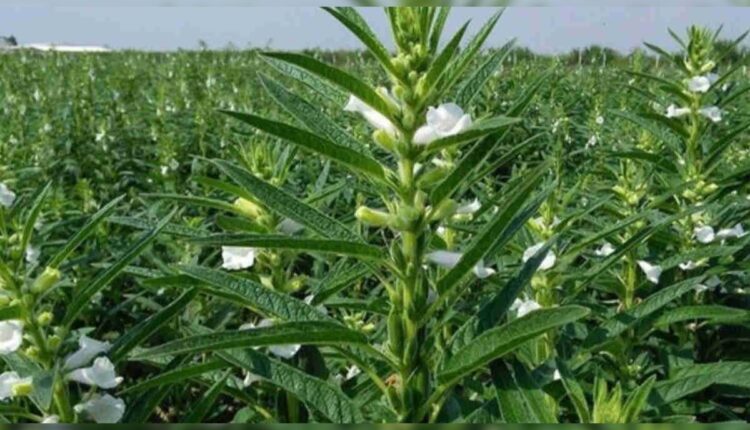Sesame Cultivation: Sesame farming business model, schemes and where is the market?
Sesame Cultivation: Rapid changes are being seen in farming methods these days. Now farmers are not limited to traditional crops only, but they are also moving towards such crops which can earn more profit at low cost. In view of climate change, rising costs and new market demands, farmers are now moving towards new crops thoughtfully.
One of these is sesame cultivation, which is no longer just a traditional crop, but is emerging as a strong business model. Farmers are not only getting good income from its cultivation, but due to its stable demand in the market, it can prove to be a profitable option in future as well. Sesame cultivation has given farmers a new hope that they can earn better profits even with fewer resources.
How can farmers create a new source of income from sesame cultivation?
Sesame cultivation is placed in the category of cash crops. This means that farmers can grow it and sell it directly in the market and earn good profits. There is a constant demand for sesame seeds in India, especially for extracting oil. Its price is usually good in the market, which benefits the farmers.
Talking about Amethi district of Uttar Pradesh, farmers there are being specially encouraged for sesame cultivation. High quality seeds are being provided to the farmers by the Agriculture Department there, which gives good yield to the sesame crop and also gets good price in the market.
If a farmer cultivates sesame by adopting technical methods, then it is possible to earn lakhs of rupees from one bigha of land. For this, all the processes like field preparation, seed selection, irrigation and harvesting have to be done at the right time and in the right way.
Government subsidy and schemes for sesame cultivation
The government is constantly encouraging farmers to cultivate sesame. Especially by giving subsidy on seeds, the government is ensuring that farmers can get more production at low cost. If we take the example of Amethi district of Uttar Pradesh, then farmers are getting two types of subsidies there:
20% to 30% subsidy on seeds of less than 10 years of quality.
40% to 50% subsidy on seeds of more than 10 years of quality.
The purpose of these schemes is that farmers get good quality seeds at a low price and they do not have to invest much for sesame cultivation. Apart from this, the officials of the Agriculture Department also provide training and information from time to time so that farmers can do farming with new techniques.
How to sell sesame crop in the market – information about MSP, Mandi, and export
Earnings in sesame farming will be possible only when the crop is sold at the right place and at the right price. For this, farmers have three main ways – MSP (Minimum Support Price), Mandi and export.
1. Minimum Support Price (MSP)
The government declares MSP for sesame crop every year. This is a fixed price at which the government promises to buy the crop from the farmers, even if the price in the market is low. This guarantees minimum income to the farmer.
2. Sale in the market
If the rate is higher than MSP in the market, then farmers can sell their sesame crop in the nearest agricultural market. Sometimes private traders are ready to pay more than the price of sesame seeds after seeing their quality.
3. Export opportunities
In India, both sesame oil and seeds are very popular in the international markets. There is a good demand for sesame especially in Japan, China, South Korea and European countries. If farmers form a group or work with a company, they can make their sesame cultivation a big business and can also benefit from direct export.
Sesame cultivation – low cost, high profit
The biggest feature of sesame cultivation is that its cost is very low. Neither much fertilizer, nor much irrigation and nor much hard work. Despite this, due to good production and market price, it gives high profit. There are many farmers in Amethi district itself who started sesame cultivation on a small scale a few years ago, but today they are doing it on a large scale. The main reason behind this is – government support, market demand, and correct information.
Conclusion
Sesame cultivation can become a new source of income for farmers today, if it is done in a planned manner. Subsidies and schemes provided by the government, good demand in the market and export opportunities are making this farming even more profitable. If you are also a farmer and want to do such farming in which the cost is low and the profit is high, then sesame cultivation can be a good option for you. All you need is the right information, the right seeds and access to the market.
Contact details: If farmers want to share information or experiences related to farming with us, then they can do this by calling us on the phone number 9599273766 or by writing an email to [email protected] or by sending your recording. Through Kisan of India, we will convey your message to the people, because we believe that if the farmers are advanced then the country is happy.



